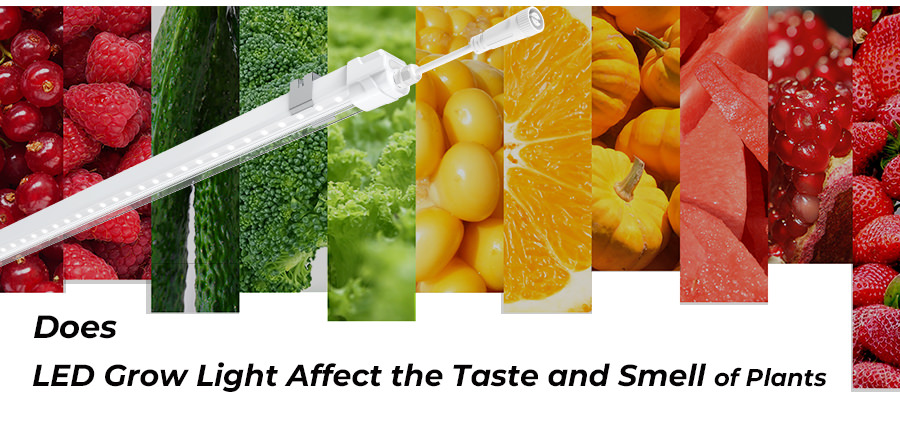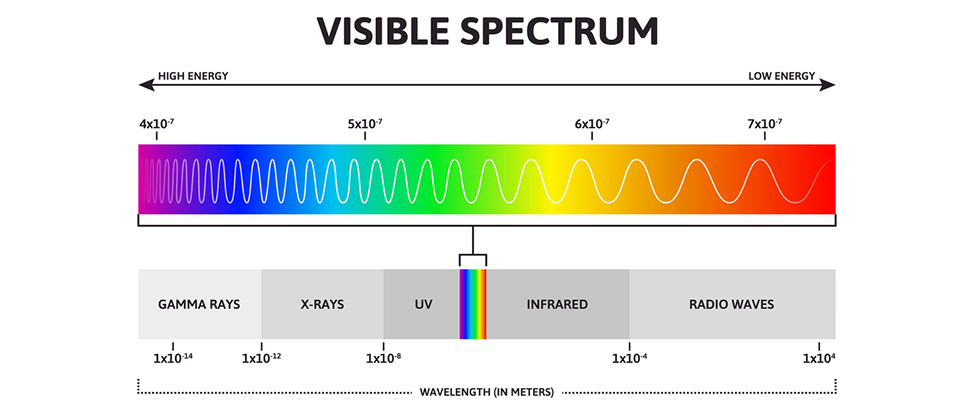Does LED Grow Light Affect the Taste and Smell of Plants

The answer is, yes. LED grow light have effects on the taste and smell of plants. It is well-known that LED grow light have positive effects on plant growth, production, and yields. Addition of LED grow lights adds value to indoor growing, achieving optimal growth, year-round production, and higher yield. It also enables growers reap more profits. But more does not mean better. Only the improved production and yields cannot meet the increasing market needs. Regardless of the vegetables, fruits, or flowers, people have various requirements for their quality. The quality of plants includes the appearance, color, taste, smell, texture, etc. Growers want their crops to have more attractive color and appearance. Similarly, customers require higher quality plants. They may want sweeter flavor, fresher taste, or better smell. Taste and smell are the key factors of plans’ quality. As known, the taste of plants depends on plant cultivars. Nowadays, with the advanced cultivation techniques, the taste and smell of plants can be enhanced. LED grow light is one of the effective techniques which can effect the taste and smell of the plants. This post will take a look at the effects of LED grow lights on the taste and smell of plants.
Light spectrum
Generally, LED grow lights are designed with light spectrum in PAR range, which is the most active range of wavelengths for photosynthesis. Among PAR range, blue light and red light are familiar to growers. Except for light in PAR range, far-red light is also known by most growers. Recent studies found that different light spectrum has effect on the flavor and smell of plants.
The studies exposed plants to LED grow lights in varying spectrum. They found that when plants exposed to red and far-red light, a floral volatile called 2-phenylethanol increased. This floral volatile contributes to the taste of tomato, strawberry, and other similar fruits. With further study, they also found that other spectrum could benefit the flavor of tomatoes. Blue light is known to be beneficial for plant growth. But increasing blue light level also has positive effects on taste and smell of tomatoes. Another spectrum that has been found to improve the flavor of tomatoes is far-red light.
Except the tomatoes, research also shown LED grow lights can influence the smell and taste of sweet basil leaves. The sweet basil leaves grown with a combination of full spectrum and enrichment of far-red light crease a more intense smell. When growers crushed the leaf in hand, the fresh cut grass elements were perceived immediately. While the more aromas were perceived when sweet basil leave cultivated under an integration of full spectrum, and enriching blue light and UV light.

Light intensity
Light intensity not only affects plant growth, but also the nutritional quality in plants, such as the accumulation of nitrates and nitrites. Plants, in particular the vegetables, are the major source of nitrates and nitrites for human. It is shown that vegetables grown under optimal light intensity create more nitrates and nitrites. They also have higher content of organic acids in plants. The organic acids are useful and health for human body. It provides different taste and smell of leafy greens based on its enrichment. Thus, light intensity can modify the taste and smell of plants.
According to the research focused on the effects of different light intensity of LED grow lights on the nitrates, nitrites, and organic acids contents in tatsoi (a variety of Brassica rapa grown for greens), increase of light intensity had different effects on the nitrates, nitrites, and organic acids contents. With the increase of light levels at pre-harvest stage, nitrates contents decreased while nitrites and organic acids contents increased. Therefore, growers can manage the light intensity to decrease nitrates and increase organic acids in tatsoi at pre-harvest stage. Then, growers can improve the taste and smell of tatsoi through increasing light level.
Light cycle
The light cycle can affect the plant flavor due to the impacts on hormone composition and concentrations. Increasing the concentrations of hormone composition can improve the flavor of food plants. We have known that plants are divided into long-day plants, short-day plants, and day-neutral plants depending on their flowering habits. In general, long day plants initiate flowering when they receive more than 12 hours daylight, while short-day plants bloom when they receive less than 12 hours daylight per day. Day-neutral plants, however, do not have significant responses to light cycle. Growers utilize LED grow lights and mimic the light cycle of natural seasons, modifying the flowering of plants. Plants may perceive changes in light cycle of LED grow lights as the season progresses and then respond with earlier or later flowering. Regulation of light cycle affects the production of florigen. With the increase of florigen, plants initiate flowering. Besides, the florigen plays an important role in the production of sugars and starch, which are the components influencing the flavor and taste of the plants. Therefore, light cycle has impact on the taste and smell of plants.
Conclusion
In sum, LED grow lights affect the taste and smell of plants. Light spectrum, light intensity and light cycle are the three key factors that affect the taste and smell of plants. Take tomatoes as an example, red light and far-red light can increase the concentration of a floral volatile called 2-phenylethanol. This floral volatile contributes to the taste of the tomatoes. Then, the taste of the tomatoes is improved with the increase of floral volatile. Light intensity affects nutritional quality in plants, such as the accumulation of nitrates, nitrites, and organic acids. The taste and smell of leafy greens are associated with the enrichment of organic acids. With the increase of light intensity, organic acids is increased. And then, those leafy greens become more tasty. Light cycle can regulate the flowering of most plants. The light and dark periods affect the production of florigen, which is the critical component for converting sugars and starch. The concentrations of sugars and starch in plants play an important role in the flavor and taste of the plants.
So far, it is not difficult to understand the importance and benefits of LED grow lights. LED grow lights can not only improve plant growth, production, and yields, but also the quality, taste, and smell. What should we keep in mind is that benefits of LED grow lights only occur in right spectrum, intensity, and light cycle. Thus, it is important to select the right LED grow lights for your plants. If you are new to indoor growing and don't know how to choose LED grow lights. Do not worry. Atop provides tailored and professional lighting solutions based on your needs. Please feel free to contact us and get your own free lighting solution.

